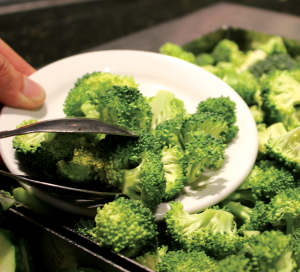 Georgetown University Medical Center researchers announced in mid-October that they had identified compounds in cabbage, broccoli and cauliflower that have protective features against harmful radiation, which is often used in cancer therapy.
Georgetown University Medical Center researchers announced in mid-October that they had identified compounds in cabbage, broccoli and cauliflower that have protective features against harmful radiation, which is often used in cancer therapy.
The compound, called DIM (3,3’-diindolylmethane), has previously been studied in the scientific field as a cancer prevention agent, but this is the first time DIM has been found to have protective properties against radiation as well.
The project was funded by GUMC’s Drug Discovery Program and the National Institutes of Health. The study was conducted by oncology professor Eliot Rosen, oncology associate professor Saijun Fan, Radiation Medicine Department Chair Anatoly Dritschilo and Drug Discovery Program Director Milton Brown.
For two weeks, the researchers exposed lethal doses of radiation to rats, and then treated some of the rats 10 minutes later with daily injections of DIM. According to Rosen, all untreated rats died, but over half of the DIM-treated animals remained alive after 30 days.
“This study was designed to see if the compound, DIM, could protect rodents from lethal doses of radiation,” Rosen wrote in an email. “We found that it did.”
The implications of this finding are widespread, as the compound can be used not only in cancer therapy but also in preventing nuclear radiation disasters.
“This could signal a potential beneficial use in humans someday to protect them from the harmful side effects of radiation therapy for cancer or protect humans from a more sinister use of radiation,” Rosen said.
Brown agreed, adding that the discovery could impact space and airline travel with regard to cosmic radiation exposure, public health with regard to nuclear disasters and the government with regard to protecting soldiers.
Although the results of the experiment have not yet been reproduced in human subjects, Rosen said researchers are optimistic that they will be able to study DIM in humans to determine the possibility of the remediation of radiation’s side effects within the next five years.
“This research represents a successful collaboration between basic scientists and the drug discovery team at Georgetown,” Rosen said. “The Georgetown Drug Discovery Program allows us to translate basic science discoveries that can be used to the benefit of human health.”
Correction: An earlier version of this article incorrectly reported that a Georgetown University Medical Center study of vegetables’ effects on radiation was funded by agencies within the Department of Defense and the Armed Forces Radiobiology Research Institute, in addition to the National Institutes of Health and Georgetown’s Drug Discovery Program. Only the latter two organizations were involved in funding the study. Additionally, the Drug Discovery Program is within GUMC, not the Department of Urology.













